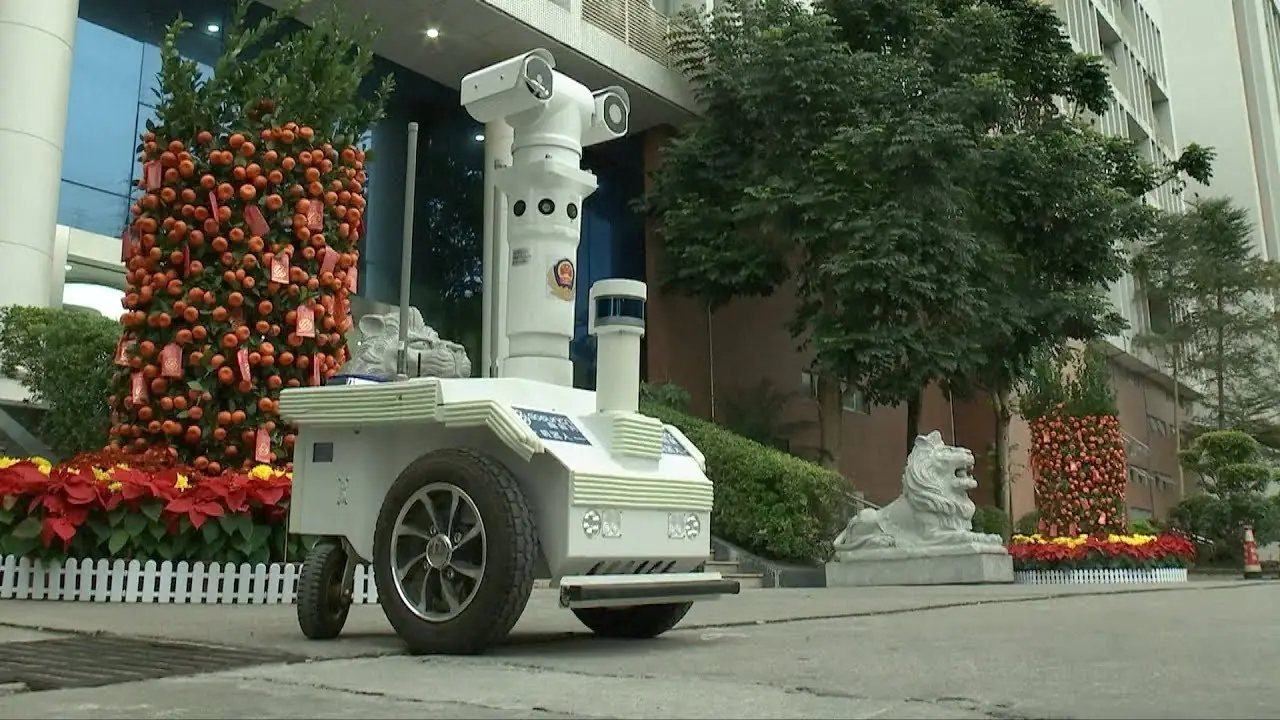In an effort to stop the spread of the COVID-19 pandemic, law enforcement needs to monitor non-essential movement outside homes and deter people from breaking regulations.
To meet this challenge, the use of technology has proven to be more helpful than ever. Law enforcement agencies around the globe have been deploying robots and drones to remotely enforce quarantine restrictions. Let’s look at some examples.
Daytona Beach Drones
Social distancing enforcement drones have arrived in Florida. The Daytona Beach Police Department, working together with DJI, is now using drones that deploy pre-recorded messages to help them disperse crowds and keep people out of all city parks, which are temporarily closed during the COVID-19 pandemic.
“We’re reducing the officer having to go out there, walk into the park property, walking into a crowd of people, share those germs back and forth just to deliver a message that, ‘The park’s closed. Don’t be in here,’” said Sgt. Tim Ehrenkaufer, who heads the department’s Unmanned Aviation Systems Unit.
The Daytona PD also announced that another machine will be used to scan people’s temperature from 300 to 400 feet away. It’s equipped with a digital camera and a heat-detecting device, FLIR (Forward Looking Infrared), and may potentially be placed in the lobby of the police department.
The devices not only allow the police to maintain their physical distance when carrying out their patrols, but their speed allows the police to oversee much larger areas than which they could achieve from the ground.
China’s 5G robots
Across China, robots and drones are being used for a variety of reasons, including: Cleaning in hospitals; providing precautionary advice to the public during police patrols; acting as security guards of key installations; and in airport screening.
One example of law enforcement use is in Guangzhou, a southern Guangdong province, where 5G-powered patrolling robots have helped police officers during disease prevention inspections.
The robot reminds the public of the importance of frequent handwashing and the mandatory donning of masks. The innovative devices are also equipped with high-resolution cameras and infrared thermometers that can scan the body temperatures of 10 people at once.
If a high temperature or the absence of a mask is detected, the robots send an alert to the authorities. All data is transmitted to a centralized control center for a real-time situational response.
And although these robots are autonomous, they can be controlled remotely; thereby saving manpower, reducing pressure on already stretched emergency services, and limiting the potential for cross-infection.
On April 7th, China reported no coronavirus deaths; the first time since it started publishing daily figures in January.
Tunisia´s Robot
At the time of writing, the North African nation has 747 cases of COVID-19 and 34 attributable deaths. Like in South Africa, people are allowed outside only for medical reasons or to purchase essentials.
To help police enforce the lockdown restrictions, Tunisia has deployed police robots, called PGuards, which approach anyone they spot on the streets to question them on their reasons for being out.
PGuards are equipped with LiDAR technology, the technology used in self-driving cars, handheld police LiDAR guns, plus infrared and thermal imaging cameras. In addition, the robot has a sound and light alarm system that can be used to communicate with the public.

